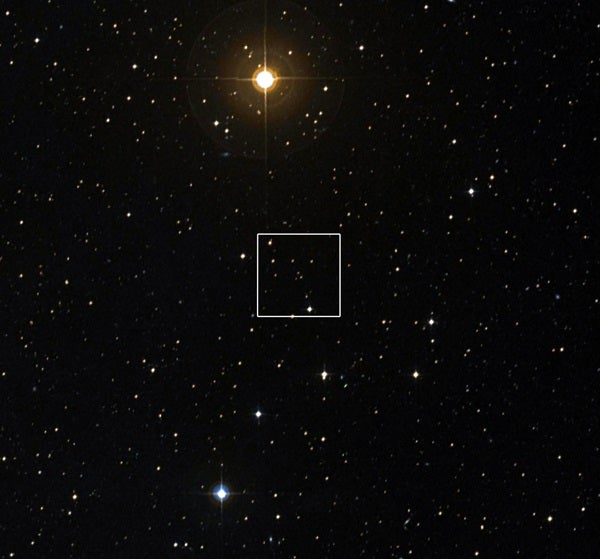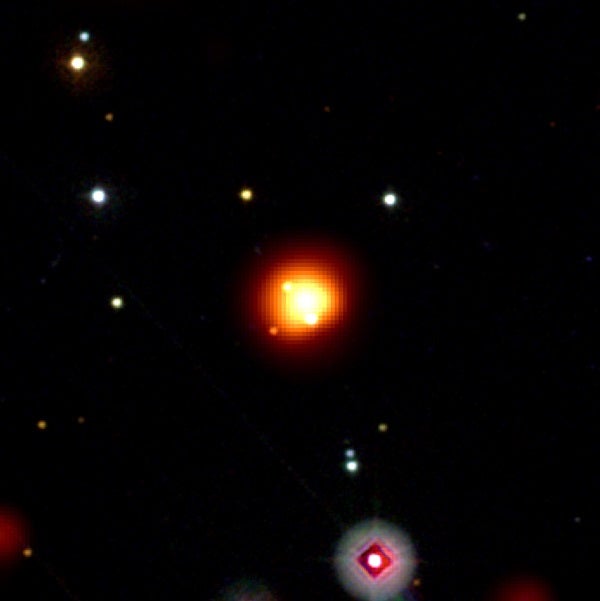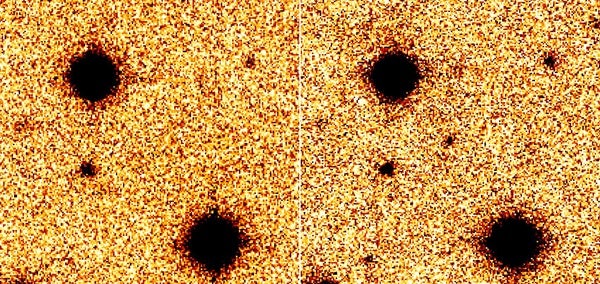NASA’s Swift satellite has found the most distant gamma-ray burst (GRB) ever detected. The blast, designated GRB 080913, arose from an exploding star 12.8 billion light-years away.
“This is the most amazing burst Swift has seen,” says the mission’s lead scientist Neil Gehrels at NASA’s Goddard Space Flight Center in Greenbelt, Maryland. “It’s coming to us from near the edge of the visible universe.”
Because light moves at finite speed, looking farther into the universe means looking back in time. GRB 080913’s “lookback time” reveals that the burst occurred less than 825 million years after the universe began.
The star that caused this shot seen across the cosmos died when the universe was less than one-seventh its present age.
“This burst accompanies the death of a star from one of the universe’s early generations,” says Patricia Schady of the Mullard Space Science Laboratory at University College London, who is organizing Swift observations of the event.
Astronomers on the ground followed up as well. Using the 7.2-foot (2.2 meters) telescope at the European Southern Observatory in La Silla, Chile, a group led by Jochen Greiner at the Max Planck Institute for Extraterrestrial Physics in Garching, Germany, captured the bursts fading afterglow.
The telescope’s software listens for alerts from Swift and automatically slewed to the burst position. Then, the team’s Gamma-Ray Burst Optical/Near-Infrared Detector (GROND) simultaneously captured the waning light in seven wavelengths.
“Our first exposure began just 1 minute after the X-Ray Telescope started observing,” Greiner says.
An hour and a half later, as part of Greiner’s research, the Very Large Telescope at Paranal, Chile, targeted the afterglow. Analysis of the spectrum with Johan Fynbo of the University of Copenhagen established the blasts redshift at 6.7 — among the most distant objects known.
GRBs are the universe’s most luminous explosions. Most occur when massive stars run out of nuclear fuel. As their cores collapse into a black hole or neutron star, gas jets — driven by processes not fully understood — punch through the star and blast into space. There, they strike gas previously shed by the star and heat it, which generates bright afterglows.
The previous record holder was a burst with a redshift of 6.29, which placed it 70 million light-years closer than GRB 080913.
Swift, launched in November 2004, has had a banner year. In March, the satellite detected the brightest GRB, which was visible to the human eye despite occurring billions of light-years away. And in January, the spacecraft’s instruments caught the first X-rays from a new supernova days before optical astronomers saw the exploding star.












